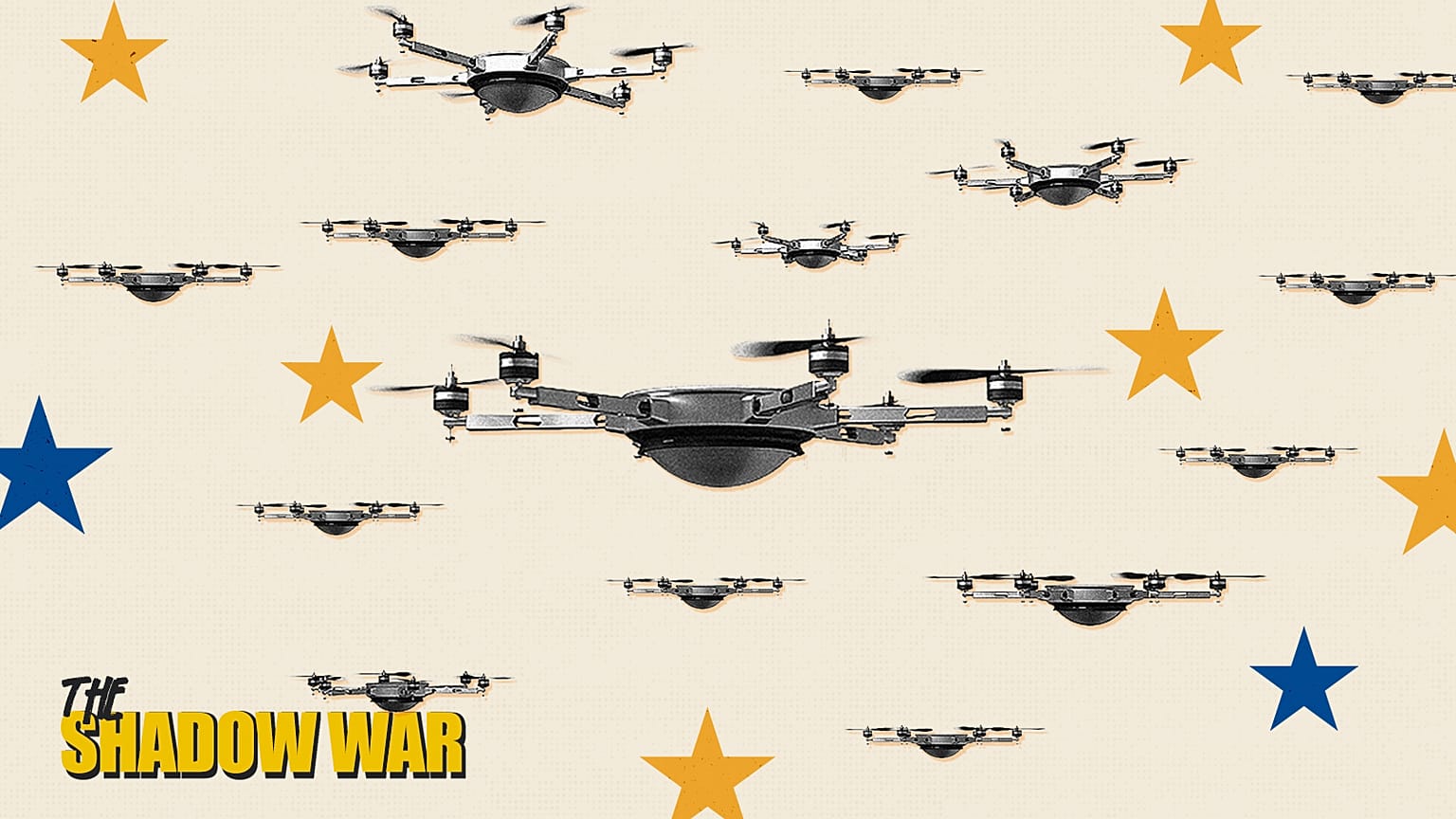Politics
Drone Incursions Challenge EU Security and Unity Amid Rising Tensions

A surge in drone incursions across the European Union is prompting concerns over security and the bloc’s unity. While some of these incidents are reportedly linked to Russia, others remain unexplained, revealing significant gaps in preparedness and the necessity for a coordinated European response. The situation is particularly alarming given that the conflict traditionally associated with Ukraine is now spilling into EU territory.
In September 2023, multiple drone incursions were reported, marking a troubling escalation. On September 9, a total of 19 Russian drones allegedly entered Polish airspace, with four being intercepted by local authorities. Just days later, similar drones were spotted over Romania, followed by disturbances at airports in Copenhagen and Oslo as drones were detected nearby. According to Robert Garbett, founder and CEO of Drone Major Group, these drones are likely small Hybrid Vertical Take-Off and Landing (VTOL) systems. He noted, “It is likely that the drones used in these attacks were piloted from nearby the zone of incursion,” suggesting a level of sophistication in their operation.
Even without direct attacks, these incursions pose significant risks. Garbett warned that the drones could potentially carry explosives or gather intelligence on critical national infrastructure, generating fear and division among populations. On September 21, drones were reported flying over a military base in France, though it remains unclear whether their operators were hostile.
The ambiguity surrounding these incursions complicates the situation further. Christophe Gomart, a French Member of the European Parliament (MEP) and former national director of military intelligence, proposed three possible motivations behind these actions: loss of control due to interference, deliberate provocations to test responses, or assessments of the defensive capabilities of EU and NATO countries, particularly Poland and Romania.
Michel Liégeois, a professor of international relations at the University of Louvain, highlighted that such ambiguity aligns with Russian hybrid warfare strategies designed to destabilize Europe. “Slowing air traffic causes economic losses and fuels public frustration,” he stated, emphasizing the need for caution in attributing every incident to Russian actions.
While drones identified in Polish airspace were confirmed to be Russian, those in Denmark and Norway remain under investigation. Riho Terras, an Estonian MEP and vice-chair of the European Parliament’s Security and Defence Committee, pointed out that “violations of Polish airspace and disruptions at Danish airports were deliberate and coordinated actions.” Yet, he acknowledged the difficulty in obtaining definitive proof, a challenge frequently encountered in the Baltic region.
As tensions escalate, some experts argue that these drone incursions serve more as political messages than military objectives. Italian MEP Salvatore De Meo posited that President Vladimir Putin is “testing the reactions of EU countries,” rather than seeking to ignite a broader conflict. Despite ongoing provocations, the European Union has largely maintained unity, which has reportedly surprised Russian officials.
Concerns over EU preparedness for such incursions are growing. Riho Terras expressed that “Europe’s peacetime drone defences are worryingly poor,” noting that nations along the eastern flank are ill-equipped to respond effectively to low-cost provocations. While France has demonstrated capabilities with its anti-drone systems during events like the 2024 Olympic Games, disparities exist across member states. Some countries have advanced counter-drone technology, while others depend on minimal surveillance.
With these concerns in mind, the European Commission recently proposed the establishment of a “drone wall” – a detection and response network along the EU’s eastern border. This initiative aims to identify and neutralize suspicious drones entering the EU. Currently, ten member states, including Bulgaria, Denmark, Estonia, and Poland, are involved, along with Ukraine, which has developed advanced drone capabilities.
Riho Terras likened the concept to Israel’s Iron Dome, which has been effective against aerial threats. Yet, he urged for broader participation from other member states, acknowledging differing security priorities across Europe. Some lawmakers from Western countries expressed skepticism about the initiative’s immediate effectiveness.
In light of these developments, General Gomart cautioned against overly relying on the “wall” metaphor, stating, “A wall is always capable of being bypassed.” He stressed that protective measures should also address potential threats originating from within EU borders.
Looking to the future, Farah Duquesne Weber from the Brussels-based agency Sierra Tango emphasized the societal dimensions of these incursions. “Each incursion is a test of Europe’s cohesion,” she noted, suggesting that these actions aim to divide public opinion and instigate anxiety among citizens. European Commission spokesperson Thomas Regnier echoed this sentiment, advocating for a unified shield that extends from north to south.
The urgency of the situation will be addressed during an informal summit in Copenhagen, where heads of state and government will discuss the implementation of the proposed “drone wall.” The context of heightened security measures, including a drone ban in Denmark during the summit, underscores the seriousness of the discussions ahead.
-

 Top Stories3 months ago
Top Stories3 months agoTributes Surge for 9-Year-Old Leon Briody After Cancer Battle
-

 Entertainment4 months ago
Entertainment4 months agoAimee Osbourne Joins Family for Emotional Tribute to Ozzy
-

 Politics4 months ago
Politics4 months agoDanny Healy-Rae Considers Complaint After Altercation with Garda
-

 Top Stories4 months ago
Top Stories4 months agoIreland Enjoys Summer Heat as Hurricane Erin Approaches Atlantic
-

 World5 months ago
World5 months agoHawaii Commemorates 80 Years Since Hiroshima Bombing with Ceremony
-

 Top Stories3 months ago
Top Stories3 months agoNewcastle West Woman Patricia Foley Found Safe After Urgent Search
-

 Top Stories5 months ago
Top Stories5 months agoFianna Fáil TDs Urgently Consider Maire Geoghegan-Quinn for Presidency
-

 World5 months ago
World5 months agoCouple Convicted of Murdering Two-Year-Old Grandson in Wales
-

 World5 months ago
World5 months agoGaza Aid Distribution Tragedy: 20 Killed Amid Ongoing Violence
-

 World5 months ago
World5 months agoAristocrat Constance Marten and Partner Convicted of Infant Murder
-

 Top Stories4 months ago
Top Stories4 months agoClimbing Errigal: A Must-Do Summer Adventure in Donegal
-

 Top Stories4 months ago
Top Stories4 months agoHike Donegal’s Errigal Mountain NOW for Unforgettable Summer Views








